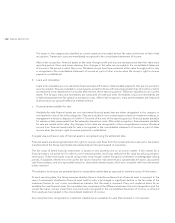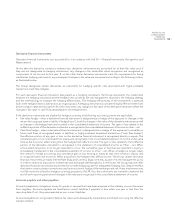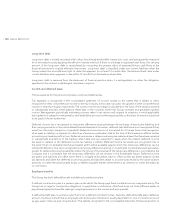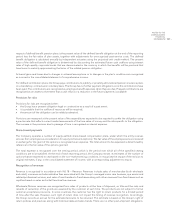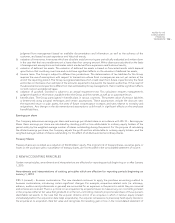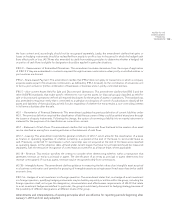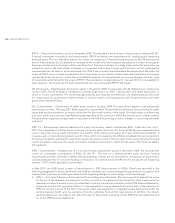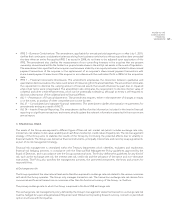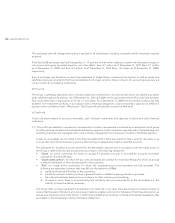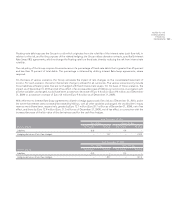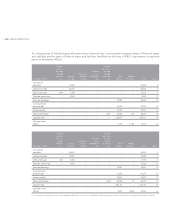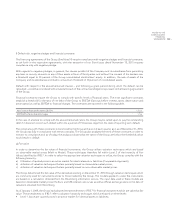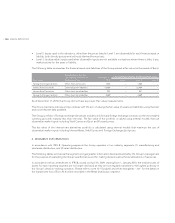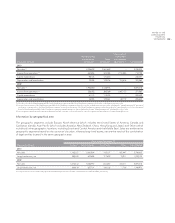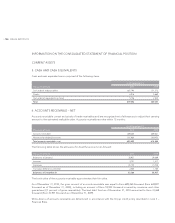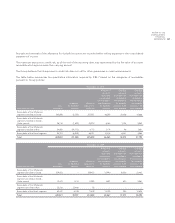LensCrafters 2010 Annual Report Download - page 139
Download and view the complete annual report
Please find page 139 of the 2010 LensCrafters annual report below. You can navigate through the pages in the report by either clicking on the pages listed below, or by using the keyword search tool below to find specific information within the annual report.|137 >
NOTES TO THE
CONSOLIDATED
FINANCIAL
STATEMENTS
IFRS 3 – • Business Combinations: The amendment, applicable for annual periods beginning on or after July 1, 2010,
clarifies that contingent consideration balances arising from business combinations whose acquisition date preceded
the date when an entity first applied IFRS 3 as issued in 2008, do not have to be adjusted upon application of this
IFRS. The amendment also clarifies the measurement of non–controlling interests in the acquiree that are present
ownership interests and entitle the holder to a proportionate share in the entity’s net assets in the event of liquidation.
The amendment also specifies that an acquirer must measure a liability or an equity instrument related to share–based
payment transactions of the acquiree or the replacement of an acquiree’s share–based payment transactions with
share–based payment transactions of the acquirer in accordance with the method set forth in IFRS 2 at the acquisition
date.
IFRS 7 – • Financial Instruments: Disclosures: The amendment emphasizes the interaction between qualitative and
quantitative disclosures about the nature and extent of risks arising from financial liabilities. The amendment eliminates
the requirement to disclose the carrying amount of financial assets that would otherwise be past due or impaired
where their terms were renegotiated. The amendment also eliminates the requirement to disclose the fair value of
collateral and other credit enhancements, which can be potentially misleading, although an entity is still required to
disclose a description of the collateral and its financial effects.
IAS 1 – • Presentation of Financial Statements: The amendment requires, either in the statement of changes in equity
or in the notes, an analysis of other comprehensive income by item.
IAS 27 – • Consolidated and separate financial statements: The amendment clarifies the transition requirements for
amendments arising as a result of IAS 27.
IAS 34 – • Interim Financial Reporting: The amendment clarifies that the information included in the interim financial
reporting on significant transactions and events should update the relevant information presented in the most recent
annual report.
3. FINANCIAL RISKS
The assets of the Group are exposed to different types of financial risk: market risk (which includes exchange rate risks,
interest rate risk relative to fair value variability and cash flow uncertainty), credit risk and liquidity risk. The risk management
strategy of the Group aims to stabilize the results of the Group by minimizing the potential effects due to volatility in
financial markets. The Group uses derivative financial instruments, principally interest rate and currency swap agreements,
as part of its risk management strategy.
Financial risk management is centralized within the Treasury department which identifies, evaluates and implements
financial risk hedging activities, in compliance with the Financial Risk Management Policy guidelines approved by the
Board of Directors, and in accordance with the Group operational units. The Policy defines the guidelines for any kind of
risk, such as the exchange rate risk, the interest rate risk, credit risk and the utilization of derivative and non–derivative
instruments. The Policy also specifies the management activities, the permitted instruments, the limits and proxies for
responsibilities.
a) Exchange rate risk
The Group operates at the international level and is therefore exposed to exchange rate risk related to the various currencies
with which the Group operates. The Group only manages transaction risk. The transaction exchange rate risk derives from
commercial and financial transactions in currencies other than the functional currency of the Group, i.e. the Euro.
The primary exchange rate to which the Group is exposed is the Euro/US$ exchange rate.
The exchange rate risk management policy defined by the Group’s management states that transaction exchange rate risk
must be hedged for a percentage between 50 percent and 100 percent by trading forward currency contracts or permitted
option structures with third parties.



